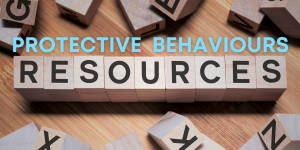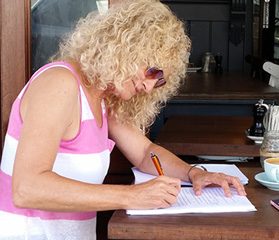

Scrolling through the messages written by survivors of child sexual abuse on the Royal Commission website, the title in this blog was calling for justice.
The handwritten notes describe their hell stories and agonise over those that didn’t make it within the failed systems in our nation that are supposed to protect and empower children.
And I share their grief of the hell that is this still happening in our nation with the statistics that most abused children (96%) are abused by someone known and trusted by them, with 1 in 4 girls and 1 in 7 boys experiencing child sexual abuse before the age of 18. [1]https://gdhr.wa.gov.au/-/protective-behaviours
The Royal Commission into Institutional Responses to Child Sexual Abuse (RCIRCSA) 2013 – 2017 was Australia’s longest-running public inquiry:
What’s the future of children in Australia?
Out of the RCIRCSA 17 volumes, volume 6 [2]https://www.childabuseroyalcommission.gov.au/making-institutions-child-safe lists a road map for moving forward in creating a safer Australia for all children. This volume looks at the role community prevention could play in making communities and institutions child safe with 10 child safe standards [3]https://childsafe.humanrights.gov.au/national-principles that will make institutions safer for children.
While the focus is currently on schools, the national child safe standards are recommended for all businesses and organisations that engage in child-related work. These organisations that implement the standards will demonstrate their leadership and commitment to child safety and wellbeing and will be known as ‘organisations of choice’, because children, young people, families, and communities will feel confident that they provide safe environments for the rights of children. [4]https://childsafe.humanrights.gov.au/national-principles/about-national-principles
As we turn into the fifth year of the RCIRCSA and the implementations of the report’s recommendations, many schools are implementing ‘prevention education’ with the inclusion of Protective Behaviours education to be delivered on a national scale, as the RCIRCSA report’s recommendation, 6.2 b) states ‘prevention education delivered through preschool, school and other community institutional settings that aim to increase children’s knowledge of child sexual abuse and build practical skills to assist in strengthening self-protective skills and strategies. The education should be integrated into existing school curricula and link with related areas such as respectful relationships education and sexuality education. It should be mandatory for all preschools and schools.’ [5]https://www.childabuseroyalcommission.gov.au/sites/default/files/final_report_-_recommendations.pdf
In WA, all schools are required to deliver to student’s appropriate protective behaviours education aligned with the WA curriculum.
Protective Behaviours education focuses on developing the skills of empowerment, communication, self-esteem, resilience, social skills, and other life skills to prevent abuse, reduce violence and promote life-enriching rather than life-depleting experiences. It encourages students to:
In Australia, the origins of PBs served as a child abuse prevention program. Although the PBs program applications have universally evolved over the years and are known by other names, the fundamental foundations as a body safety program remain consistent.[7]https://christinecamp.com.au/pbs-consulting/
What can we do to help the future of the children in our communities?
‘Message to Australia’ gave those who bravely told their story to the Royal Commission an opportunity to share a message with the Australian community about their experience and hopes for creating a safer future for children. These messages were published in a commemorative book that was handed over to the National Library of Australia during the final sitting of the Royal Commission on 14 December 2017.

References[+]

Hello and welcome to my blog.
I love writing and sharing my journey as an author and encourage others to write their stories too.